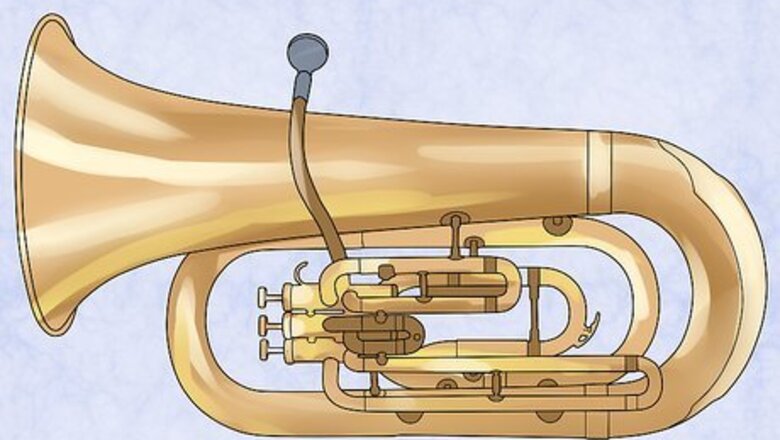
views
Getting the Right Equipment
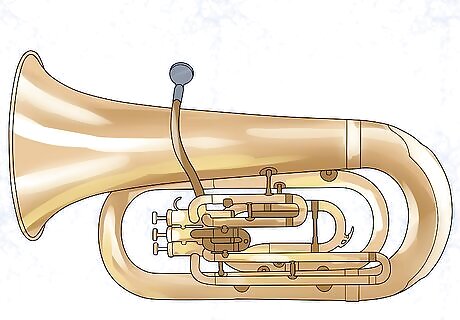
Make sure the tuba fits your body. Tubas are quite expensive when new, but it shouldn't be too hard to find a used tuba for under 2000 dollars, or even lower. If you’re joining a school band, you can usually rent tubas directly. Most concert tubas are available in a few different pitches, which may be more appropriate for the style of music you plan on playing. You can get tubas pitched in BBb, CC, Eb, and F. Eb tuba is used for brass bands (almost exclusively) and some soloing F tuba is used for passages requiring higher notes and solo works. It is also seen in small ensemble settings (brass quintet, brass quartet, etc) BBb and CC tubas are intended for large ensemble playing (band, orchestra, etc.) BBb tubas are more common at the high school, college, and amateur level as sousaphones are pitched in BBb, but professional orchestra players in the U.S. use CC tubas. In Europe it can vary from country to country.

Use a mouthpiece of the correct size. Mouthpieces come in different sizes, so be sure to get one that is best suited for you and your size. Generally made of fiberglass or composite metal, a good mouthpiece is essential to a properly tuned and played instrument. If you buy a used tuba, or rent one, make sure you get your own new mouthpiece. A good quality mouthpiece is important to develop the proper buzzing technique and breath support. A fiberglass mouthpiece is sometimes used as an alternative because temperature doesn't effect its intonation as much as a metal mouthpiece. Fiberglass mouthpieces may work and are more inexpensive but you lose some quality sound and overtones.
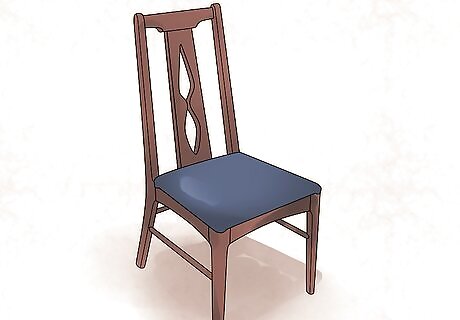
Find an appropriate chair. Tubas are not generally played standing up, unless you're playing a sousaphone, which is designed for use in a marching band. In order to practice, you'll need a good chair, in which you can maintain proper posture and balance to build the skills that will keep your notes pure. Get a basic hard-backed chair without any arm wrests, or a stool that you can sit on comfortably. Avoid practicing on the couch, in a recliner, or in otherwise less-than-upright conditions. You can't get the breath-support necessary to play correctly, and you'll build poor habits into your practice routine.
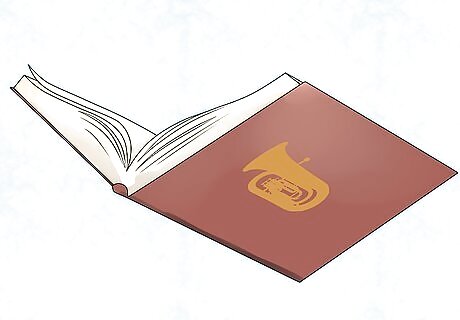
Get a method book. No point in learning the mechanics of the tuba if you can't read the music or apply what you've learned. While it's difficult to learn to play any instrument properly from a book, it's a great way to get the basics down and figure out how to start playing music on the tuba, as well as how to hold and play it properly. If you're trying to use a computer to aid you, having a projector connected to it is probably the only way it wouldn't be an inconvenience. It's good to get started online, but finding a professional method book is the best way to learn an instrument. Wait to troubleshoot technique issues online after you've got the fundamentals down.
Holding the Tuba

Sit on the edge of your seat and be relaxed. Your back should be straight, and your head should be lifted comfortably so that you're looking straight ahead at the conductor, if there is one, or straight ahead if you're playing alone. Your back should not be touching the back of the chair, your feet flat on the floor.
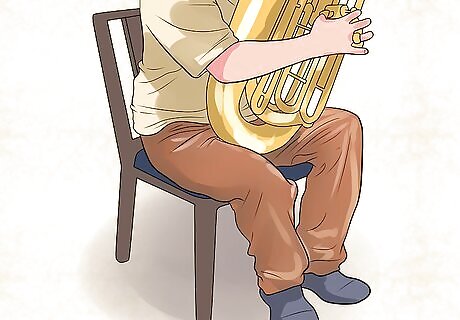
Rest the tuba on your lap. Depending on your height, it may be appropriate to rest the tuba on the chair between your legs or rest it on your lap, gently on the top of your thighs. If it's a full-size tuba, you may want to get a stand to set it on. It's important to position the tuba in such a way that you will not have to bend yourself to reach the mouthpiece. Bring the horn to you, don't bend to the horn. When you try to fill the horn with air, you'll notice a big difference.
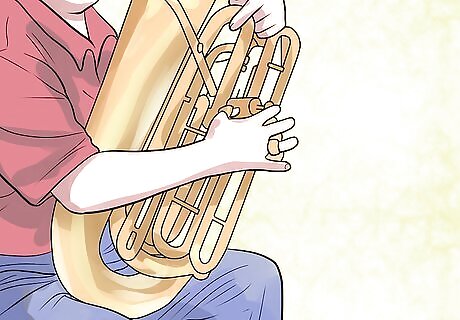
Use the correct hand positioning. On a right-handed tuba, you'll lean the tuba slightly to the left, using your left hand to support the lean. Place your right hand on the valves, either on the broad part of the pad on a rotary tuba, or with your fingertips on the center of the valves on a valve tuba. Most tubas have a small ring to put your thumb through. This forces your hand to stay in place and helps give a bit of support from your right hand. Find the ring, if your tuba has one, and position your hand accordingly. On a lefty tuba, you'll be resting the tuba practically on your left leg which is why stands are very important for lefty players. Your right hand has to reach for the valves, but it will also be providing a lot of support. The left hand will keep things balanced. Although it may be tempting, do not curl your right thumb. That causes your fingers to be under your valves with only the tips on top. Hold your fingers upwards on top of the valves so that they go straight up and straight down when pressed.
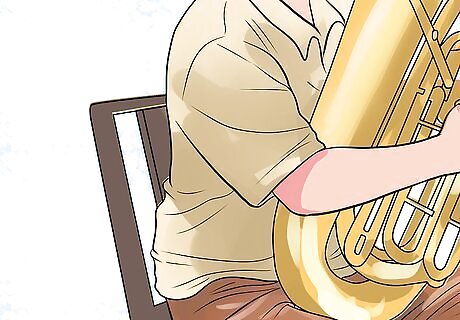
Relax your shoulders. Let your lap support the tuba, not your arms. Try to relax your shoulders and let your arms hold the tuba loosely. Treat it like your date, not like your wrestling partner. The more comfortably you can move around the horn, the better you'll be able to play.
Developing Your Breath-Support and Embouchure

Breathe from your diaphragm. Remember, this is a big instrument, so your air needs to be big and fast to get the sound out out of the horn. Breath deep down into your diaphragm, not up high in your throat. That air has a long way to go, so start it out from a place of power. Unless you're playing a Sousaphone in a marching band, the goal is not to blow all of your air reserves through the horn at once, but to keep your diaphragm taunt. If someone were to punch you in the stomach, you should stay tight and not collapse. Tense your abdominal muscles while you play and while you blow.
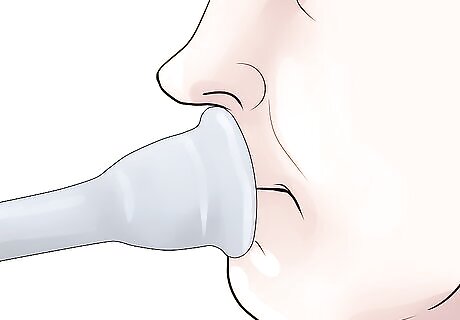
Buzz your lips. While blowing, close your lips to the point that it vibrates in the mouthpiece. Keep blowing and vibrating your lips so that sound gets out of the tuba. As tuba is a large brass, try blowing a raspberry into the mouthpiece. That's the kind of vibration you are looking at. Once you've got your buzz figured out, start your note by saying either "ta" or "da" into the mouthpiece, depending on how you want to articulate the note. A properly maintained "embouchure" is critical to playing brass instruments. It's difficult to buzz your lips properly when you're first learning how to play. Don't puff out your cheeks. It's a waste of air that should be going into your horn, it looks silly, and you'll end up with very sore cheeks after only a brief period of playing.
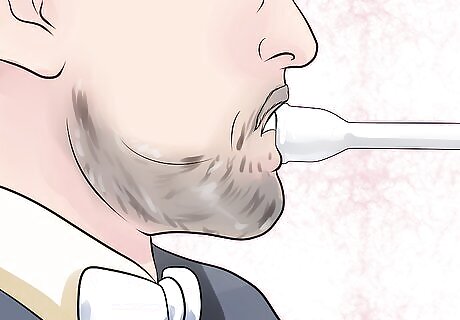
Practice changing notes without pressing the valves. At any given position or configuration of keys pressed and open, you can play a number of notes, usually three. Some beginners have difficulty hitting a note right the first time, but don't worry too much while you're just getting started. Practice feeling where the different registers are. Pinch your cheeks and your lips as you blow to control the amount of air that comes through your "buzz." You can raise or lower the pitch of the note in the same position, accordingly. Try associating how the note will sound, where the note is on the staff, what it feels like to play the note, and the fingering for it. Many beginners only associate the note on the staff and the fingering for it, so they become confused when playing notes with the same fingering but different mouth positions.
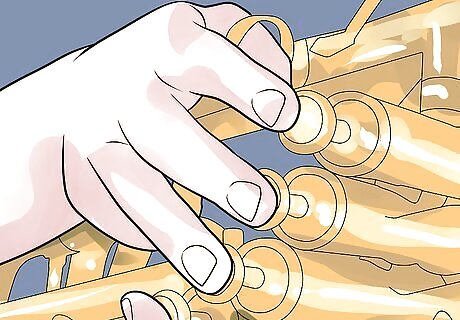
Press the valves properly. Once you've started to get a feel for the register of the tuba, start experimenting with fingerings. Press the keys and practice doing so in time with the notes that you play. Whether you're studying along with a book or receiving lessons, start practicing fingering the keys fully and playing clear notes with the valves pressed. Most guide books should come with finger charts, which correspond the fingerings to the specific notes on the scale that you want to play. This is an excellent way to learn to play. Push the valve in the center, not on the rim. Pushing it on the rim can make the valve stuck.
Developing Your Sound
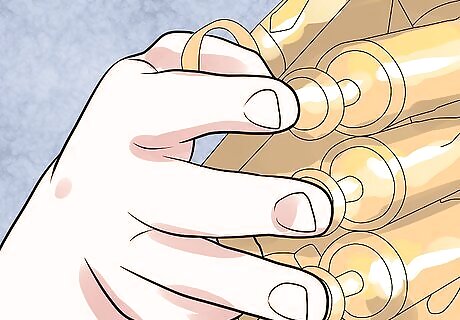
Practice scales. Start learning your fingerings and playing scales to develop the fundamentals to start playing music. Scales might not be the most exciting thing to learn when you're first getting started, but before you know it you'll be able to hit all the right ones to play the "Imperial March" from Star Wars (the "Stairway to Heaven" of the tuba) and take off from there.
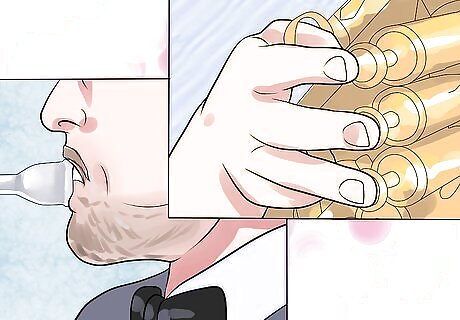
Practice your timing. The tuba is both a rhythmic and a melodic instrument, providing the big, sturdy, bottom line of the band. To be the best tuba player you can be, it's important to practice playing rhythmically, so you play not only the right notes, but the right notes at the right time. Great tuba players are as rhythmically precise as a drummer and as melodically clear as a trumpet player. Practice with a metronome. Even when you're playing scales, play them in time. When you're playing your practice songs, play them in time. Learn to internalize that sense of time by tapping your feet and paying close attention to your rhythmic motion. Practice your counting. Sometimes, tuba notes will be spaced out very far, meaning that you'll mostly be counting empty measures on some songs. Develop a good method for counting rests to make sure you're always on time for your big notes.
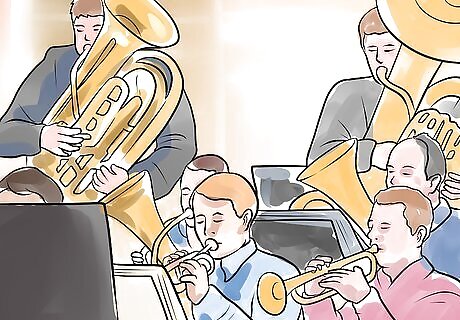
Join the school band or a community orchestra. Tuba is a much better instrument when you play it with others. Sometimes, the sheet music for a song on tuba involves only a few notes (the bass line), which you can learn quickly and get bored with just as fast. But when you add the trumpets and the trombones, the flutes and the clarinets, those few notes become so much more. You're making music. Consider taking private lessons as well. Like most instruments, learning a tuba properly usually requires in-person instruction. Whether you receive that in school band or in private lessons, getting one-on-one instruction is a good way of keeping you from building bad habits and moving forward with your playing. Explore good instructors available in your area and sign up.
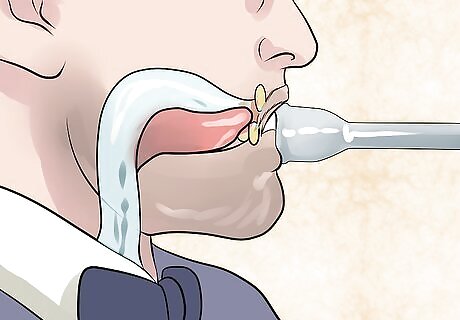
Learn double and triple tonguing. These slightly more advanced techniques are useful for playing fast passages, when you're called for. While this isn't something that you need to start learning when you're first getting to know your way around the tuba, developing the clarity, tone, and speed of your notes can be helped with learning to tongue quickly. When double tonguing, think either ta-ka-ta-ka or da-ga-da-ga. Try saying it first, and when you try double tonguing, think as if your tongue is moving in one of the two ways described above. Triple tonguing has four approaches: Ta-ta-ka, ta-ka-ta, da-da-ga, or da-ga-da. Try all, and choose the one that works best on you and stick with it.
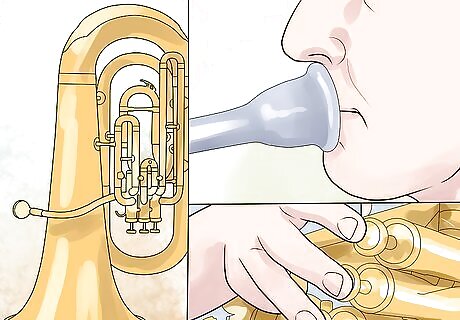
Care for your tuba properly. A tuba isn't as delicate as say, a violin, but it is still quite prone to denting and scratching. Always transport your instrument in a case and learn to maintain your tuba to get the best possible sound. Empty the water that is in your tuba frequently by pushing the water key and blowing air into the instrument without vibrating your lips. Check individual valves by pressing down each one in turn and blowing; if there's any water in the tubing, it should sound and feel obvious. You may need to remove the tubing or rotate the tuba to clear everything. Find somewhere for tuba repairs. Professional instrument repairmen might charge you a pretty penny for fixing things, but they know what they're doing and it's better than ruining a giant investment by messing with something you don't understand.


















Comments
0 comment